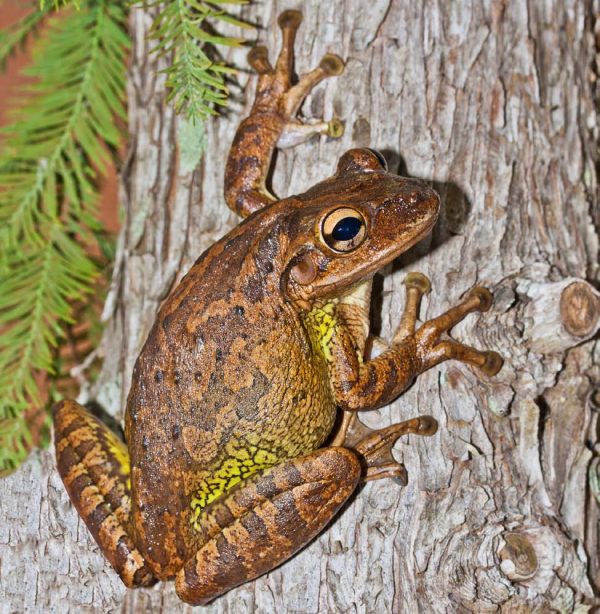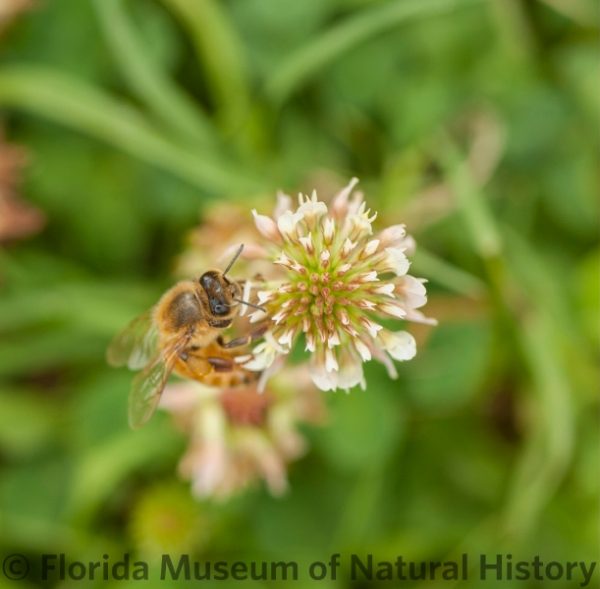
Florida Museum photos by Kenneth Krysko
Florida’s warm, wet climate makes the state a prime environment for new species to move in and thrive.
And because we are a crossroads for international trade and tourism with a booming population, there are many chances for plants and animals to come to the area and try out a new sub-tropical lifestyle.
What happens when a new species comes to Florida and really likes living here? They’re called non-natives, and we take a close look at them. If they’re deemed an economic or environmental threat to Florida, we call them invasive species.
Simply put, an invasive species is non-native and harmful. It can be a plant, an animal or even a microbe. It can live in the water or on land.

Florida Museum photo by Kristen Grace
Plants and animals can be labeled as introduced, non-native, non-indigenous, exotic, transplanted or foreign – and yet not be invasive. Some non-native species, such as orange trees and honey bees, are welcome because they’re useful to us and not harmful to our natural environment.
Designating a species as invasive allows it to be monitored and controlled.
So, who determines which species are invasive? Lots of people, mostly in government agencies, conservation groups, universities and research centers.
Different terms are used across the many fields of science and government agencies, so labels can sometimes be confusing based on who is using it and how. There are many more terms used within certain fields of study, or by different government agencies, to classify and regulate non-native organisms. And designations are constantly reevaluated to make sure the right guidelines are being followed to protect our ecosystems and resources.
Here are some key words or phrases we commonly use when discussing plants and animals (all the way down the family tree to single-cell organisms) that are in places they don’t normally live.
Native Range
Native Range – This is the region, area or ecosystem where a species is naturally found. Species in their native range are a natural part of the ecosystem’s biodiversity, which has a balance of resources to keep populations healthy and predators to prevent population explosions.
Non-native or Introduced
Non-native or introduced – This is a species, sometimes a single plant or animal, that is found outside of its native range. These plants or animals are usually inadvertently brought into a region by a human, or are cultivated in a farm setting before escaping into the wild.
Naturalized or Established
Naturalized or established – This is a species that has established a population outside of its native range. It often doesn’t fit the criteria of causing environmental or economic harm, but it is thriving without the help of human cultivation.
Invasive
Invasive – This is a naturalized species that is expanding in the wild, displacing native species and altering the ecology of natural communities. According to the USDA, an invasive species is:
1) non-native (or alien) to the ecosystem under consideration and
2) causing or is likely to cause economic or environmental harm or harm to human health.
Noxious Weed
Noxious weed – Many invasives are regulated by agricultural agencies that protect farming, so it’s not surprising that there is a further label for plants that are considered more than just invasive. A noxious weed is an invasive that is regulated by federal, state or municipal laws. In many cases it is illegal to purposefully grow or replant these plants, and rules require people to destroy or report them when discovered. (Yikes!) This applies to aquatic plants, not just plants on land.
More Reading
Florida’s four invasive plant lists: